Favorite Fall Fragrances
Many might think of fall and winter as times when few plants produce sweet-smelling blooms, but that’s actually far from the truth. Here are some of the best.
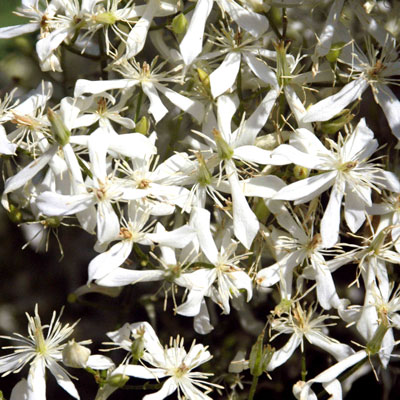
Sweet autumn clematis
• Sweet autumn clematis is in flower across Texas right now. It’s a naturalized East Texas vine that’s well suited anywhere it can find a support. However, if your mind’s eye is showing you the big purple clematis from northern spring seasons, this one isn’t going to be a match. Sweet autumn clematis flowers are much smaller (quarter-sized) and waxy white. The name implies fragrance, and while there is some, it’s not as strong as some of the other plants that we’ll mention. However, this fast-growing vine is so pretty in bloom that everyone should find a spot for it. Trim it back to, or nearly to the ground after the first freeze.
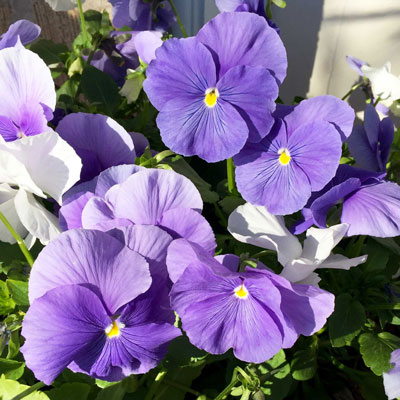
Pansies
• Few flowers are any sweeter smelling October through April than our beloved pansies. Smaller-flowering types produce more blooms and correspondingly more fragrance. Pansies and violas are our most winter-hardy winter annual flowers. They’re cheerful and colorful, all of which add up to explain why pansies are also Texas’ most popular annual flowers year-after-year. Plant a bed near an entry, or fill up large pots. You’ll start smelling the results right away.
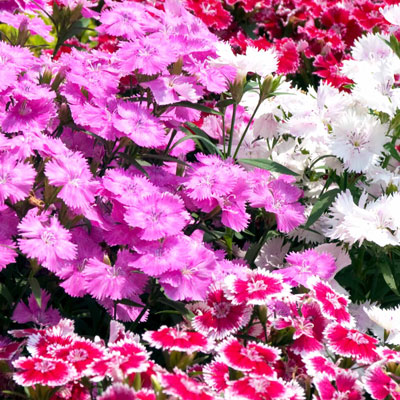
Pinks
• Pinks are another of the fall and winter fragrant flowers. They’re sisters to florists’ carnations, and they exude that same sweet cinnamon fragrance well into the spring. They’re second only to pansies in terms of winter hardiness, and they’re available in wonderful combinations of reds, pinks and white, also lavender. My own experience with pinks has been that the fragrance is fairly heavy, so they’re best used close to where people will be passing by.
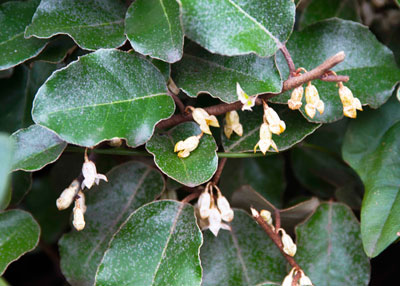
Elaeagnus
• Elaeagnus is another fragrant, fall-flowering shrub. Its gray-green leaves show up wonderfully against dark backgrounds. It blooms in October and November, and the flowers from just one plant will fill a city block with their heady aroma. Curiously, they are some of the least showy blooms in all of landscaping – drooping brown ovals that are hidden by leaves. Also, know that the plant itself gets fairly large (to 6 or 8 feet tall and wide).

Sweet olive (Photo gratefully borrowed from the Missouri Botanical Garden website)
• Sweet olive, Osmanthus fragrans, is true to its name – sweetly fragrant each fall. Its flowers are barely noticeable visually, but you certainly won’t be able to miss their sweet smell in your garden. It’s a tall evergreen shrub. It’s winter-hardy to Zone 8.
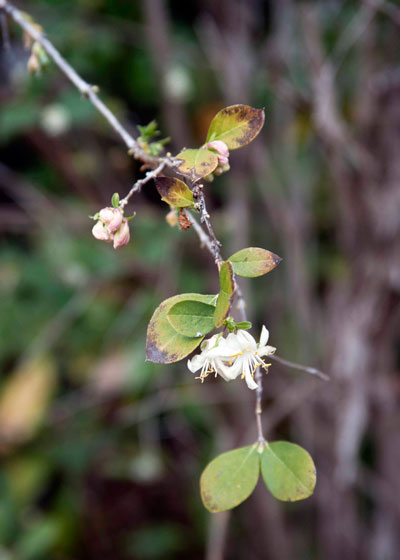
Winter honeysuckle
• Winter honeysuckle (Lonicera fragrantissima) is one of the woody, shrubby types of honeysuckles. It blooms in January and into early February locally, so plant it to the north of your nose. It’s an ugly duckling of a shrub, so grow it toward the back of your landscape. It will get to 5 or 6 feet tall and wide, but its sweet smells will lay over half an acre like a blanket of perfume. You’ll probably have to grow your own unless you can find one online. Nurserymen rarely offer it for sale.
